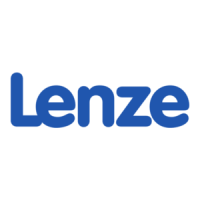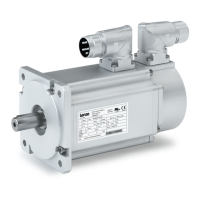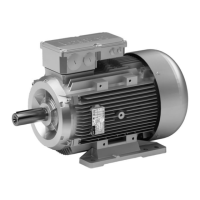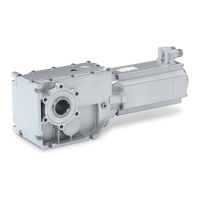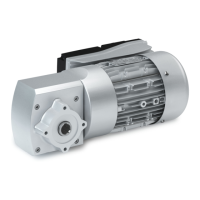Troubleshooting and fault elimination 10
45
Lenze • BA 33.0006 • 5.1
10 Troubleshooting and faultelimination
If faults occur during operation of the drive system:
• First check the possible causes of malfunction according to the following table.
Note!
Also observe the corresponding chapters in the operating instructions for
the other components of the drive system.
If the fault cannot be remedied using one of the listed measures, please contact the
Lenze Service.
Danger!
• Only work on the drive system when it is in a deenergised state!
• Hot motor surfaces of up to 150 °C. Observe cooling times!
• Remove loads acting on motors or secure loads acting on the drive!
Fault Cause Remedy
Motor too hot
Can only be evaluated by
measuring the surface
temperature:
• Non-ventilated motors
140 °C
• Externally ventilated or
self-ventilated motors
110 °C
Insufficient cooling air, blocked air
ducts.
Ensure unimpeded circulation of cooling air
Preheated cooling air Ensure a sufficient supply of fresh cooling air
Overload, with normal mains voltage
the current is too high and the speed
too low
Use larger drive (determined by power measurement)
Rated operating mode exceeded (S1 to
S8 IEC/EN 60034-1)
Adjust rated operating mode to the specified operating conditions.
Determination of correct drive by expert or Lenze customer service
Loose contact in supply cable
(temporary single-phase operation!)
Tighten loose contact
Fuse has blown (single-phasing!) Replace fuse
Overload of the drive
Check load and, if necessary, reduce by means of longer ramp-up
times
Check winding temperature
Heat dissipation impeded by deposits Clean surface and cooling fins of the drives
Motor suddenly stops and
does not restart
Overload monitoring of the inverter is
activated
Check controller settings
Reduce load caused by longer acceleration times
Incorrect direction of
rotation of the motor,
correct display on the
controller
Motor cable polarity is reversed
Check the polarity and correct
Polarity of encoder cable reversed
Motor rotates normally but
does not reach the expected
torque
Motor cable interchanged cyclically
Not all motor phases connected
Connect the phases at the motor cable connection correctly
Motor turns in one direction
at maximum speed in an
uncontrolled manner
Motor cable interchanged cyclically Check motor connector and, if necessary, correct
Polarity of encoder cable reversed Check encoder connection and, if necessary, correct
Motor rotates slowly in one
direction and cannot be
influenced by the controller
Polarity of motor cable and encoder
cable reversed
Check the polarity and correct
Irregular running
Insufficient shielding of motor or
resolver cable
Checking shielding and earth connection
Drive controller gain too large Adjust the gains of the controllers (see Drive controller operating
instructions)
Vibrations
Insufficiently balanced coupling
elements or machine
Rebalance
Inadequate alignment of drive train Realign machine unit, check foundation if necessary
Loose fixing screws Check and tighten screw connections
Running noises
Foreign particles inside the motor
Repair by manufacturer if necessary
Bearing damage
Surface temperature > 140°C Overload of the drive
Check load and, if necessary, reduce by means of longer ramp-up
times
Check winding temperature
Heat dissipation impeded by deposits Clean surface and cooling fins of the drives
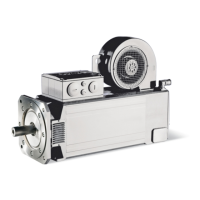
